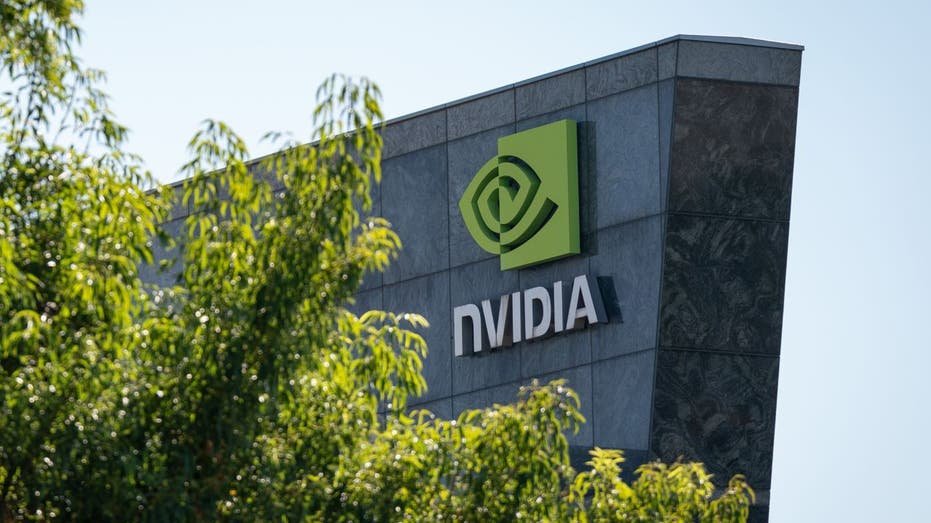Alphabet‘s (GOOG -0.43%) (GOOGL -1.19%) Waymo unit is widely considered the front-runner in the driverless vehicle space, while Tesla (TSLA -1.71%) generates the most publicity in this realm, with its CEO touting that it will be the first to “solve autonomy.”
But, currently, the best driverless vehicle stock is Nvidia (NVDA 0.35%). The artificial intelligence (AI) technology leader isn’t a pure play on autonomous vehicles, but neither is Alphabet, nor Tesla, nor most of the companies involved in this burgeoning market.

Image source: Nvidia.
The driverless vehicle market has tremendous growth potential
Competition is fierce in the driverless vehicle space because this market promises to be humongous. Eventually, all the world’s cars and trucks and probably most other forms of transportation will be autonomous. The big unknown is when fully autonomous vehicles will be legal across the United States and in other countries.
Autonomous vehicle market sizes and growth projections vary a lot depending upon what’s included in the market and by source. One growth projection that falls in the middle of the range between conservative and extremely optimistic is by Precedence Research, which estimates the autonomous vehicle market will reach $4.45 trillion by 2034, which equates to a blistering compound annual growth rate (CAGR) of 36% over the next 10 years.
Don’t get hung up on exact growth projections by any single source. The main point is that regardless of what’s included in the market definition (cars and trucks, just cars, just the driverless vehicle tech and not the vehicle), growth projections across sources for the next 10 years and even longer are extremely robust. Most sources peg CAGRs in the low-30 percentages to the high-30s percentages.

Screenshot by author of Nvidia’s presentation at the Consumer Electronics Show (CES) 2025.
Nvidia offers an end-to-end AI-powered driverless tech platform
Nvidia offers companies developing driverless vehicles or driverless vehicle technology in general a complete end-to-end solution. Its core offerings include:
- A data center AI supercomputer (DGX system): Used for training self-driving AI models. The company’s AI chips — graphics processing units (GPUs) — comprise the core of this system.
- A simulation platform (Omniverse): Used for simulating various scenarios that driverless vehicles could encounter on the roads. Omniverse is also used by some automakers for building digital twins of their factories to help increase efficiency.
- An in-vehicle AI supercomputer (DRIVE AGX): These systems act as the “brains” of a vehicle. They process the massive amount of incoming data from the vehicle’s various sensors and make driving decisions. They also can power a vehicle’s cockpit. Nvidia’s GPUs comprise the core of this system. These systems are used for “AI inferencing,” which is the deployment of a trained application.
Companies can pick and choose what Nvidia tech they use in their driverless vehicle development programs. Tesla, for instance, uses Nvidia’s tech for training its self-driving AI models, but doesn’t use Nvidia’s in-vehicle AI supercomputer. Tesla has been developing its own AI chip for inside its vehicles because the company believes it will provide it with a competitive advantage.
However, many companies use all Nvidia’s driverless vehicle tech offerings. Some companies, however, do not fully disclose all the AI-powered driverless tech they are using.
There are two main reasons Nvidia is a fantastic way to invest in driverless vehicles:
Advantage No. 1: Nvidia is already profiting from the burgeoning driverless vehicle space
This advantage brings to mind the proverb “a bird in the hand is worth two in the bush.”
By investing in Nvidia, investors have a company that is already profiting from the driverless vehicle space, rather than a company that just has potential, no matter how great that potential might be. (Though we don’t know exactly to what degree Nvidia profits because it doesn’t break out its profits by categories.)
Moreover, it seems highly likely that these profits will explode in size in the coming years because so many companies are developing with Nvidia’s driverless vehicle tech. And a good number of them have inked well-defined partnerships that involve using Nvidia’s tech inside each vehicle, or each vehicle of a certain model or models, they produce starting at a certain model year.
Meanwhile, Alphabet’s Waymo, Tesla, Rivian, and countless other companies are spending money — and huge sums of money, at that — in their efforts to develop driverless vehicle technology, including for robotaxis in some cases.
Sure, Tesla is generating revenue when a Tesla vehicle buyer elects to purchase its “supervised full-self-driving” package, but we can bet that revenue pales compared to how much it’s spending developing its autonomous driving tech.
Likewise, the same holds true for Waymo, which is now generating some substantial revenue from its paid robotaxi rides. As of April, it was providing more than 250,000 paid rides a week — a fivefold increase from a year ago — as management shared on the company’s Q1 2025 earnings call. But the company’s “other bets” category — of which Waymo is widely assumed to be by far the largest component — had an operating loss of $1.2 billion.
Advantage 2: Nvidia has a massive lead in the autonomous vehicle tech space
Here’s an extremely powerful quote from CFO Colette Kress from Nvidia’s quarterly earnings call in August 2024:
Automotive was a key growth driver for the quarter as every automaker developing autonomous vehicle technology is using Nvidia in their data centers. [Emphasis mine.] Automotive will drive multibillion dollars in revenue across on-prem[ises] and cloud consumption and will grow as next-generation AV [autonomous vehicle] models require significantly more compute.
Take this in: Every automaker that’s developing driverless vehicle tech (and nearly all of them are) was using Nvidia’s tech for AI training purposes as of last August. “Every”! This word should be music to the ears of Nvidia stock investors.
Kress’ “multibillion dollars” refers to just revenue included in the company’s data center platform. It doesn’t include driverless vehicle tech revenue in Nvidia’s auto and robotics platform, which includes sales of DRIVE AGX. Nor does it include the Omniverse offering for simulation, as this revenue falls into the professional visualization platform.
The number of companies that are developing autonomous vehicles or autonomous vehicle systems using Nvidia’s tech must be in the thousands and includes automakers, truck makers, robotaxi developers, Tier 1 auto suppliers, software companies, and others.
But here’s a sampling of major companies that are known to be using Nvidia’s autonomous vehicle tech for both AI training and AI inferencing: Toyota (the best-selling automaker in the world), General Motors (the U.S.’s top-selling automaker), Mercedes-Benz, and Volvo Cars.
Moreover, the news for Nvidia investors gets even better: Nearly every larger Chinese EV maker — including Warren Buffett-backed BYD Company and Nio — has partnered with Nvidia to provide its driverless vehicle tech inside their vehicles, or at least in some models, in addition to using Nvidia’s tech for AI training. These are big wins because the Chinese EV makers have recently been gaining significant EV market share in China and Europe. The more vehicles they produce, the more DRIVE supercomputers they will need to buy from Nvidia.
A final thought
I think it speaks volumes to the quality of Nvidia’s AI-powered driverless vehicle tech that brands that have long been renowned for their focus on safety (Volvo Cars) and top-quality engineering (Mercedes-Benz) have partnered with Nvidia to put DRIVE AGX systems in their vehicles, in addition to using Nvidia’s tech for training and simulation.
Higher-end vehicle brands are less likely to chance using anything but what they consider the best technology in their vehicles, as their ability to get premium prices for their vehicles depends heavily on maintaining their good reputations.
In short, not only is Nvidia stock the best overall AI stock, but also the best driverless vehicle stock.






